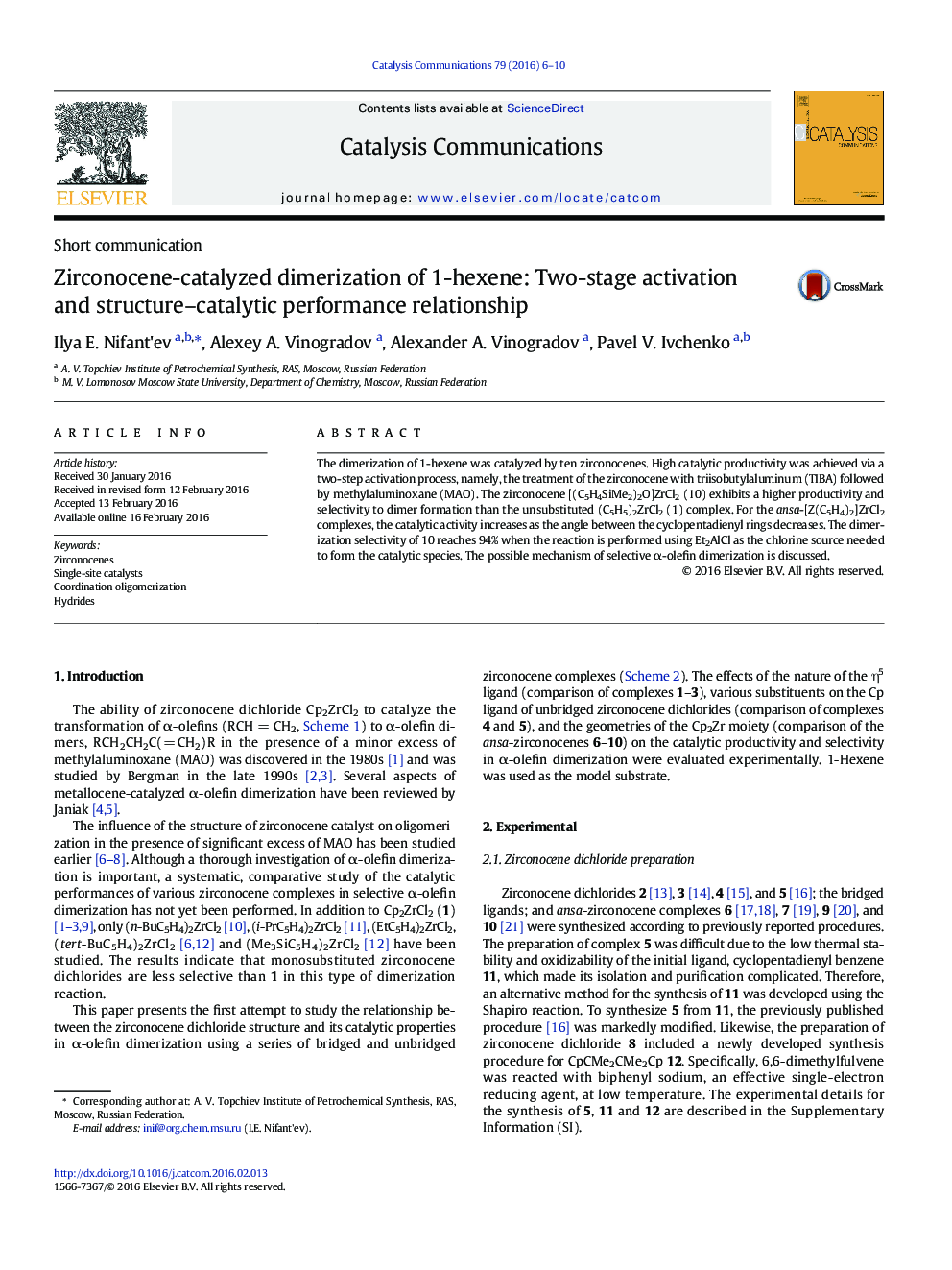| Article ID | Journal | Published Year | Pages | File Type |
|---|---|---|---|---|
| 49273 | Catalysis Communications | 2016 | 5 Pages |
•The catalytic performances of 10 different zirconocenes in the dimerization of 1-hexene were compared.•The zirconocenes were activated via a two-step process.•The catalytic productivity of ansa-zirconocenes increases with increasing bridge length.•[(C5H4SiMe2)2O]ZrCl2 is the most selective and productive dimerization catalyst.
The dimerization of 1-hexene was catalyzed by ten zirconocenes. High catalytic productivity was achieved via a two-step activation process, namely, the treatment of the zirconocene with triisobutylaluminum (TIBA) followed by methylaluminoxane (MAO). The zirconocene [(C5H4SiMe2)2O]ZrCl2 (10) exhibits a higher productivity and selectivity to dimer formation than the unsubstituted (C5H5)2ZrCl2 (1) complex. For the ansa-[Z(C5H4)2]ZrCl2 complexes, the catalytic activity increases as the angle between the cyclopentadienyl rings decreases. The dimerization selectivity of 10 reaches 94% when the reaction is performed using Et2AlCl as the chlorine source needed to form the catalytic species. The possible mechanism of selective α-olefin dimerization is discussed.
Graphical abstractFigure optionsDownload full-size imageDownload as PowerPoint slide
